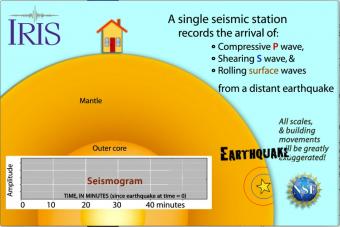
How many different ways can an earthquake shake us?
An earthquake generates seismic waves that (1) penetrate the Earth as body waves (P & S) or (2) travel as surface waves (Love and Rayleigh). Each wave has a characteristic speed and style of motion. Here we exaggerate the motion by bouncing a building to show what sensitive instruments record as seismic waves arrive at the station. Animation to characterize behavior of three seismic waves. The seismogram shows the arrival times of the three generalized waves. This image just shows a single body-wave path through the Earth to avoid cluttering the image. Waves travel in all directions from an earthquake.
CLOSED CAPTIONING: A .srt file is included with the download. Use appropriate media player to utilize captioning.
This highly simplified cartoon is intended to portray:
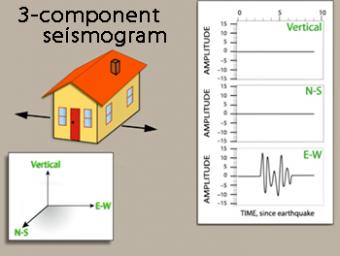
We use exaggerated motion of a building (seismic station) to show how the ground moves during an earthquake, and why it is important to measure seismic waves using 3 components: vertical, N-S, and E-W. Before showing an actual distant earthquake, we break down the three axes of movement to clarify the 3 seismograms.
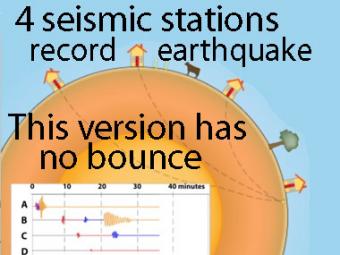
This companion to the animation "Four-Station Seismograph network" shows the arrival of seismic waves through select wave paths through the Earth (P and S waves) and over the surface of the Earth. The movement at distant stations occurs at a microscopic scale. While that doesn't result in noticeable movements of the buildings, the arrivals are recorded on sensitive seismometers.
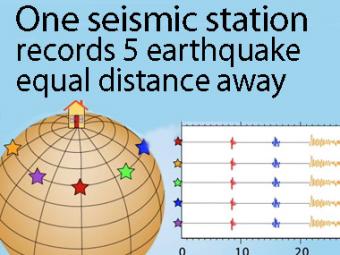
A gridded sphere is used to show a single station recording five equidistant earthquakes.
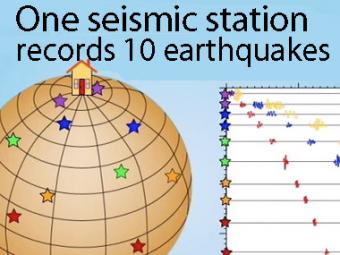
A gridded sphere is used to show:
1) the seismic stations don't need to be lined up longitudinally to create travel-time curves,
as they appear in the first animation, and
2) a single station records widely separated earthquakes that plot on the travel-time curves.
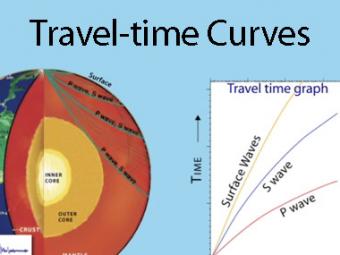
A travel time curve is a graph of the time that it takes for seismic waves to travel from the epicenter of an earthquake to the hundreds of seismograph stations around the world. The arrival times of P, S, and surface waves are shown to be predictable. This animates an IRIS poster linked with the animation.
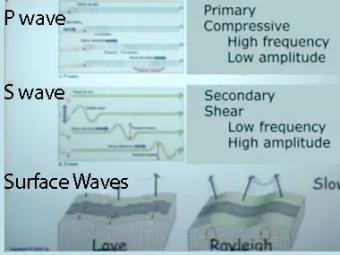
Video lecture on wave propagation and speeds of three fundamental kinds of seismic waves.
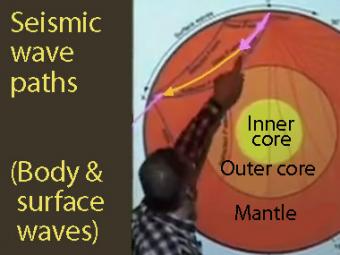
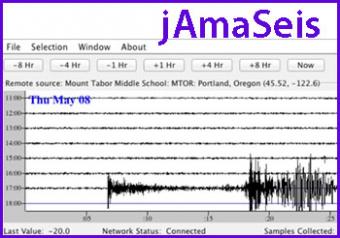
jAmaSeis is a free, java-based program that allows users to obtain and display seismic data in real-time from either a local instrument or from remote stations.
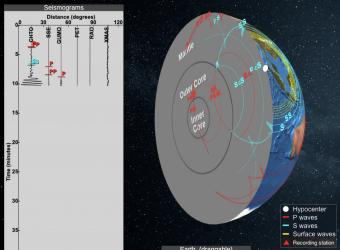
Seismic Waves is a browser-based tool to visualize the propagation of seismic waves from historic earthquakes through Earth’s interior and around its surface. Easy-to-use controls speed-up, slow-down, or reverse the wave propagation. By carefully examining these seismic wave fronts and their propagation, the Seismic Waves tool illustrates how earthquakes can provide evidence that allows us to infer Earth’s interior structure.
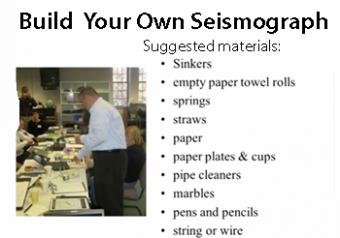
Working in small groups of 3-4, students design and construct a seismograph using common household and craft materials provided. Students will demonstrate to the class (by shaking their table) how their seismographs records ground motion and if possible, the time of the disturbance occured.
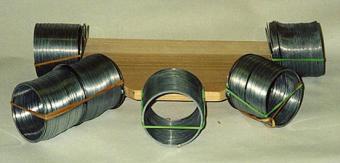
The slinky is an effective tool for the demonstration seismic wave characteristics and wave propagation. Slinkys can be used both individually and in various combinations to demonstration different concepts.
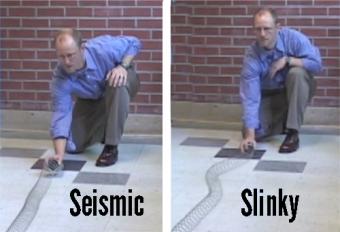
Students will produce P and S waves using a Slinky© to understand how seismic waves transfer energy as they travel through solids. All types of waves transmit energy, including beach waves, sound, light, and more. The velocity difference between the faster compressive P wave and the slower shearing S wave helps seismologists locate an earthquake’s epicenter.
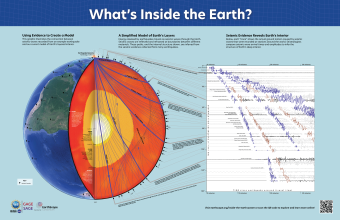
Seismic waves from earthquakes ricochet throughout Earth's interior and are recorded at geophysical observatories around the world. The paths of some of those seismic waves and the ground motion that they caused are used by seismologists to illuminate Earth's deep interior.
We encourage the reuse and dissemination of the material on this site as long as attribution is retained. To this end the material on this site, unless otherwise noted, is offered under Creative Commons Attribution (CC BY 4.0) license